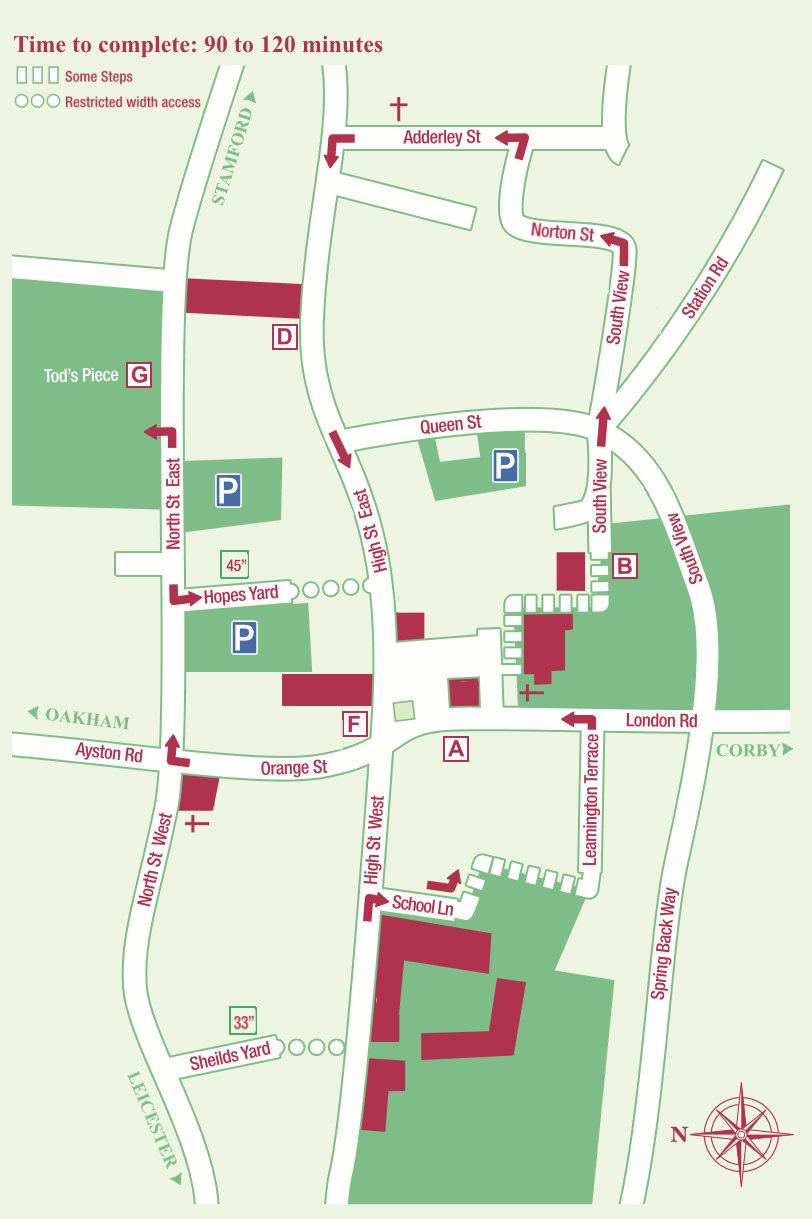Come to Uppingham and take a wander around our award winning Heritage Trail. There are 20 identified sites numbered on the map and you will find 7 information boards along the route which you can follow using the online map below (there’s more info behind each number) or a paper map which you can download to print from this page. You will also find the Heritage Trail map leaflet available in most outlets in Uppingham Town.

Market Place
Our trail begins here where you will find the first trail board on the railings by the pedestrian crossing...
Falcon Hotel
The Falcon Hotel has a dominating presence in the Market Place which was given a Royal Charter in 1281...
Norton's Plough
Norton’s Plough can be seen above the door of the ironmongers trading on this site since the 18th century...
The Post Office
This elegant Georgian building is a result of an encroachment onto the Market Place without permission...
The Parish Church
Two modern statues of St Peter and St Paul stand either side of the nave. Can you work out who is who?...
Grammar School
Built in 1584 to provide free education for 20 local boys, its the origin of Uppingham School...
Beast Hill
The Uppingham Pound or Beast Hill as its known was used to hold beasts - what type of beasts do you think? ...
Railway Station
The single line railway through Uppingham was an essential element of the town for many years until 1964...
Congregational Chapel
A charismatic preacher set about raising the £942 required to build this 350 seat chapel in 1807...
The Town Hall
A hall has stood on this site for over 100 years and has been used in various ways including ‘war purposes’...
High Street East
Blossoms is small stone building built in the early 17th century as shop with jettied walls and timber-framing...
Public Houses
The area of The Crown is where the late 5th or early 6th century Saxon settlement of Uppingham started...
Uppingham School
Founded in 1584, Uppingham is a leading co-ed boarding school with 790 pupils in 15 boarding house...
Shields Yard
The path Uppingham’s inhabitants trod when they had business with the King’s Steward in Norman times...
Leamington Terrace
Originally called ‘Wash Pond Lane’ as the pond used to clean carts and provide for watering horses...
Orange Street
Quantities of oranges used to be brought into the town to be sold for making marmalade so it is said...
Methodist Church
In 1817 school master Charles Peach registered his schoolroom as a ‘place of dissenting worship’....






